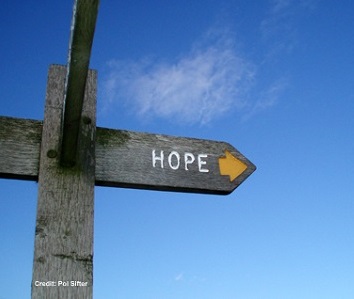
November 22, 2015
Something went right this week.
More than a year after voters passed a water bond that included $2.7 billion for storage projects, the state agency assigned to set the rules for distributing the storage money has given us hope.
The California Water Commission staff unveiled proposed rules that attempt to set a level playing field for a range of water storage projects. The staff proposed rules that rely on solid data, begin to take into account the real effect climate change will have on the state's water supply, and help make sure the public won't be stuck with costly white elephants.
The rules aren’t perfect, but they clearly buck the demands of dam builders that the agency just give them the money and cut everyone else out.
When the water bond was moving through the legislative process, before it went on the ballot in November 2014, several environmental groups (including Sierra Club California) opposed the part of the bond that seemed to make sure dams would get a free ride. We hated the idea that there would be no legislative oversight of the storage money once the bond was approved. Moreover, a little-known agency would be charged with distributing the money.
There was little hope of having our concerns addressed though, because the legislature's Republicans wouldn't vote to put the bond on the ballot unless the storage money was in it. When a two-thirds vote is needed--as it was in this case--the Republicans can call some shots.
The Democratic leadership negotiating the bond bill and the governor's staff figuratively patted us on the head (or booted us in the behind) and told us not to worry our pretty heads. The bureaucrats would do an honest job making the regulations, they said. Dams wouldn't get the upper hand. Then the legislature overwhelmingly voted to put the total $7.5 billion bond on the ballot.
After thoughtful debate, our volunteer leaders decided not to oppose the ballot measure. There were good things in there to help advance the kinds of water policies we've pushed for years. And there were important funds to help disadvantaged communities improve their drinking water supplies.
Instead, Sierra Club California would await the bond's certain passage and then our staff and volunteers would work within the regulatory system to make sure the environment had a voice while the Water Commission created the rules.
It was a leap of faith and we really hoped the landing wouldn't break our bones.
Nearly every river in the state has already been dammed, some more than once. Dams take the life out of rivers. They destroy habitat, flood cultural and historic sites, and often just suck up money that could be more smartly spent on better water storage options.
The better option generally is groundwater recharge and storage that relies on captured storm water or recycled wastewater. One Stanford study determined that for $2.7 billion California could “buy” at least six times as much groundwater storage as surface storage (a.k.a. dams).
In the last decade, as climate change has begun to show its impacts, damming Northern California rivers that depend on snow pack that won't be consistently reliable has made even less sense. The emphasis needs to be on regional resilience, and storage projects need to be closer to populations, designed to minimize environmental damage, and not focused on dams.
This different emphasis isn't just the stuff environmentalists talk about. Nowadays, even water system engineers make the same case.
But that hasn't stopped the few who want untenable dams built--preferably with as many taxpayer dimes as possible. And they have continued to push the Commission to write weak rules.
Thank goodness for Sierra Club California's water policy advocate, our allies and our volunteers who wrote dozens of letters and provided technical comments to argue for fair regulations.
The proposed rules will need to be moved forward by the majority of the eight water commissioners next month. Then they'll go through a level of legal review by another agency that oversees all rulemaking to make sure regulations comply with the law.
It may not be until 2018 that dollars are distributed. And the actual distribution will have to be designed to make sure time is allowed for the best projects to get a shot at the money.
That's still a lot that has to happen. But for now, things are looking good. Indeed, I'm feeling a bit thankful.
Sincerely,

Kathryn Phillips
Director
Sierra Club California is the Sacramento-based legislative and regulatory advocacy arm of the 13 California chapters of the Sierra Club.
Please consider becoming a sustaining donor.